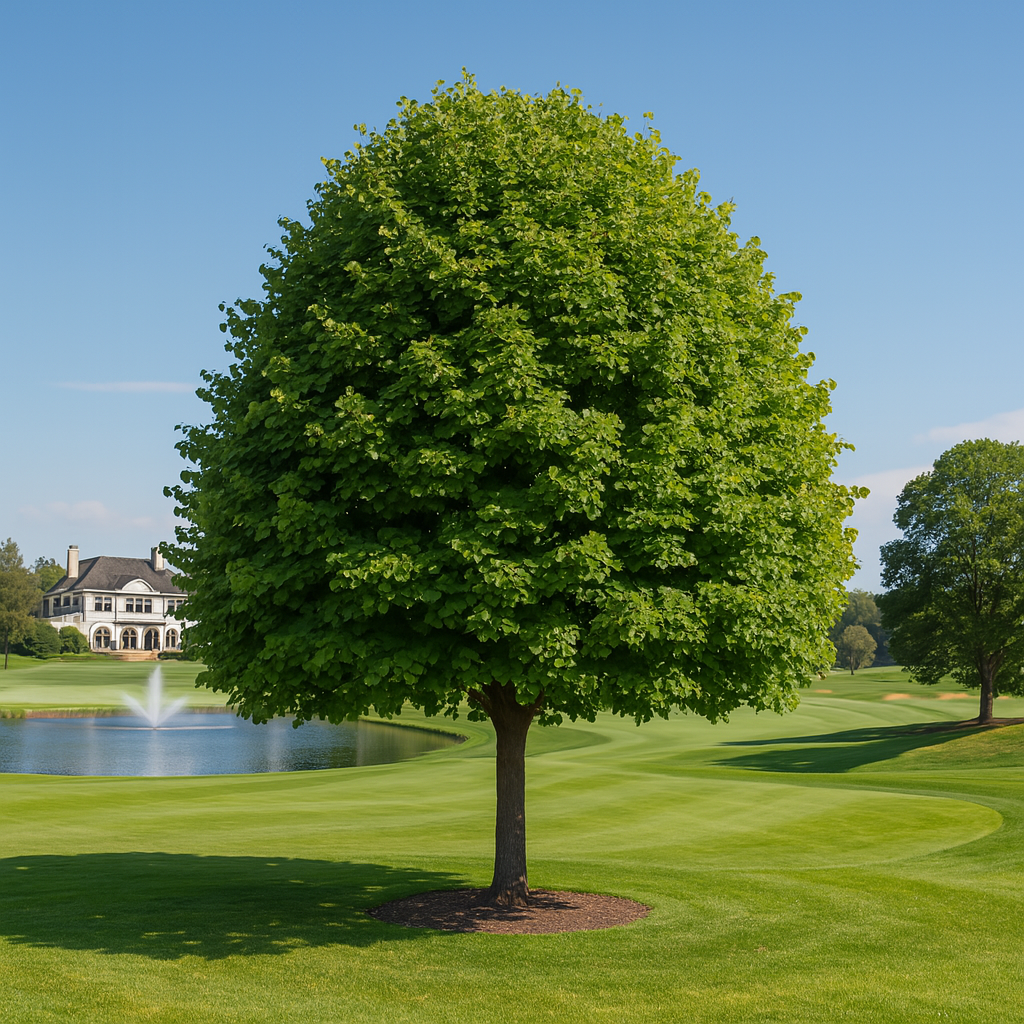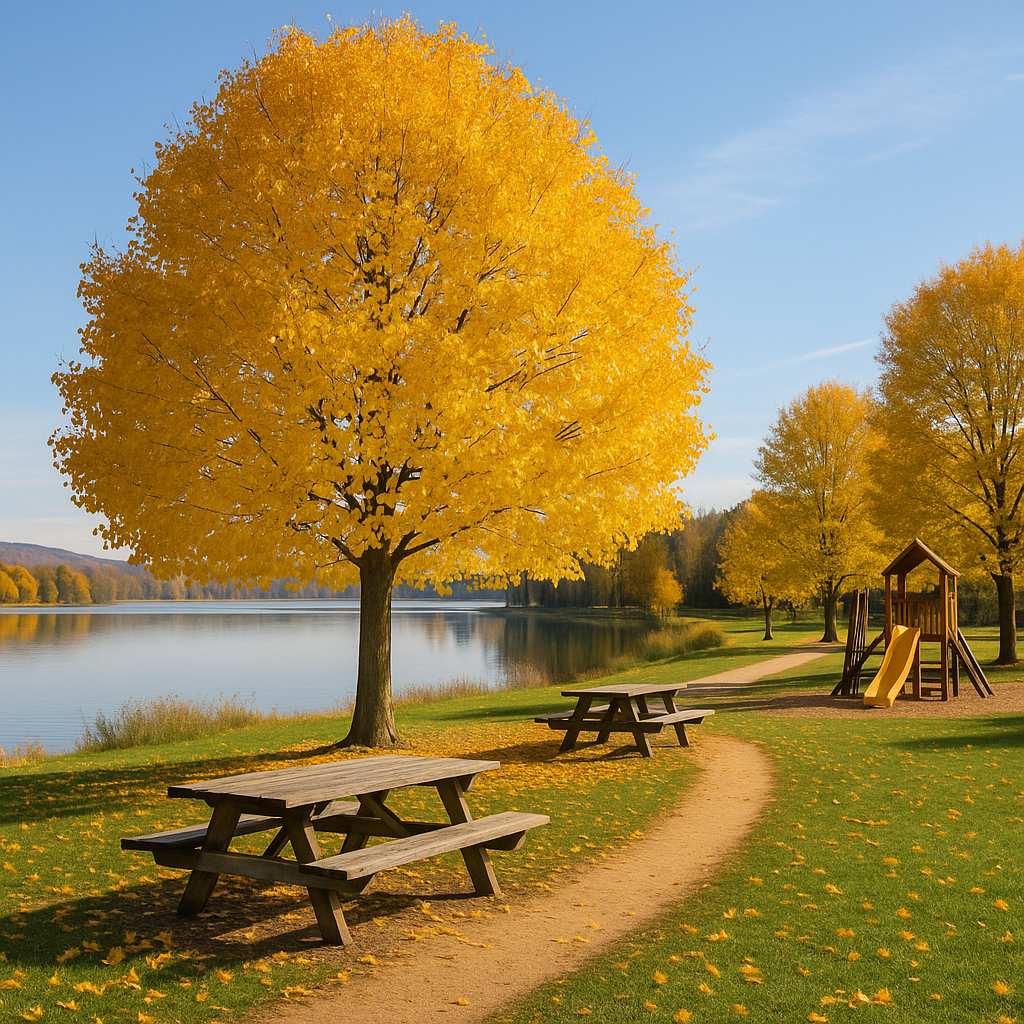Limited Quantities - Reserve Now For Fall
Little Leaf Linden Tree
Little Leaf Linden Tree
Couldn't load pickup availability
Tilia cordata
Littleleaf Linden Tree
The Littleleaf Linden Tree is a graceful, upright deciduous shade tree valued for its heart-shaped leaves, fragrant pale-yellow flowers, and formal symmetry. Known for attracting pollinators in droves during its summer bloom, this European native has become a go-to tree for urban landscapes, large lawns, and street plantings.
Offering filtered shade, ornamental elegance, and strong environmental performance, the Littleleaf Linden is perfect for boulevard plantings, campus grounds, pollinator gardens, and estate-scale designs.
Littleleaf Linden Tree Overview
| Attribute | Details |
|---|---|
| 🌿 Botanical Name | Tilia cordata |
| 🏷️ Common Names | Littleleaf Linden, Small-leaved Lime |
| 🌳 Mature Height | 40–60 feet |
| 🌐 Mature Width | 30–40 feet |
| 📈 Growth Rate | Moderate (1–2 feet per year) |
| ⏳ Lifespan | 100–200+ years |
| 🧊 USDA Zones | 3–7 |
| ❄️ Chill Hours | 1,000–1,200 hours |
| ☀️ Sun Preference | Full sun to partial shade (best form and flowering in full sun) |
| 🧱 Soil Type | Well-drained loam, clay, or sandy soils |
| ⚖️ Soil pH | Slightly acidic to neutral (6.0–7.5) |
| 💧 Water Needs | Moderate; tolerates short dry periods once established |
| 🌸 Flower Color | Pale yellow clusters; bloom in early to mid-summer |
| 🐝 Pollination | Attracts bees, butterflies, and other beneficial pollinators |
| 🌿 Growth Habit | Pyramidal to rounded canopy with dense branching |
| ↔️ Spacing | 30–40 ft apart for shade or formal rows |
| 🏡 Landscape Uses | Street tree, shade tree, campus landscapes, pollinator gardens |
| 🧹 Maintenance Level | Low to moderate |
Environmental Benefits
🌸 Produces highly fragrant blooms that are a magnet for pollinators
🌿 Offers dense shade and cooling canopy in urban heat zones
🌎 Absorbs air pollutants and buffers sound in busy environments
🪶 Provides nesting sites and seasonal cover for songbirds
Pros & Cons
| ✅ Pros | ⚠️ Cons |
|---|---|
| 🐝 One of the best trees for pollinators during bloom season | 🍯 Sticky sap (honeydew) from aphids may occur in high-traffic areas |
| 🌳 Strong structure and long lifespan for legacy landscapes | 📏 Size may be too large for small residential yards |
| 🌞 Adaptable to urban soils and partial shade | ✂️ Occasional pruning needed to raise canopy in high-clearance areas |
| 🌼 Beautiful fragrant flowers and dark green foliage | 🐜 Can attract aphids if unmanaged |
| 🏛️ Excellent for formal planting schemes and street rows | ❄️ Slower to establish than faster-growing ornamental trees |
Planting & Care Guide
🛁 Water thoroughly before and after planting; maintain soil moisture until established
🕳️ Dig a wide planting hole, 2× the width of the root ball; plant at original soil depth
🌾 Apply 2–4 inches of mulch around the base to regulate moisture and temperature
💦 Water weekly during the first year; reduce frequency once deeply rooted
✂️ Prune in late winter to shape canopy and remove crossing or low limbs
🧪 Fertilize in early spring with a slow-release tree fertilizer if needed
The Littleleaf Linden Tree combines beauty, function, and ecological support, making it a standout for pollinator-focused landscapes, shade tree projects, and long-term urban planning. Its fragrant blooms, elegant shape, and adaptability make it a timeless addition to both traditional and modern landscapes.
Share




